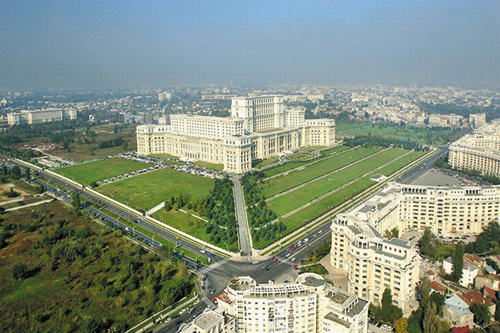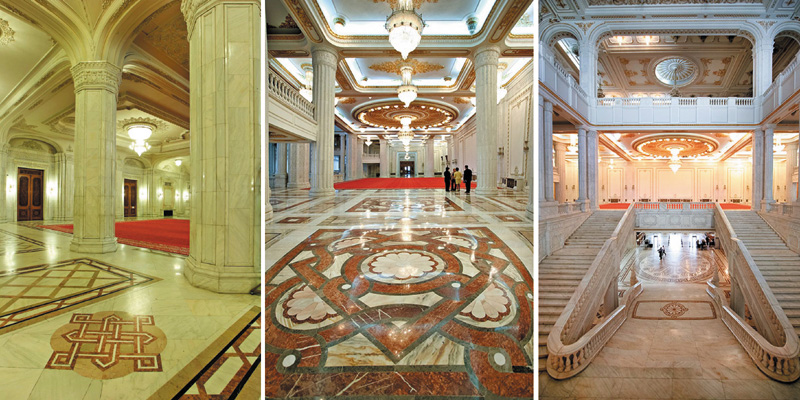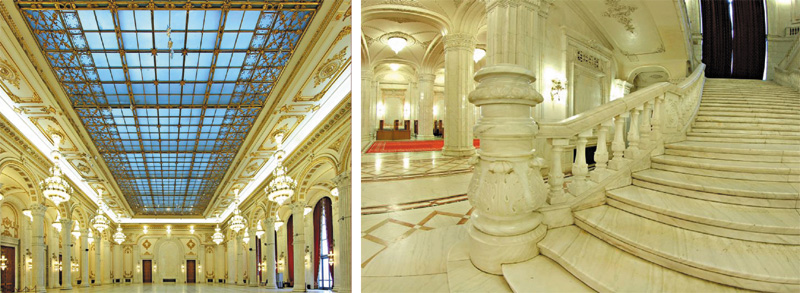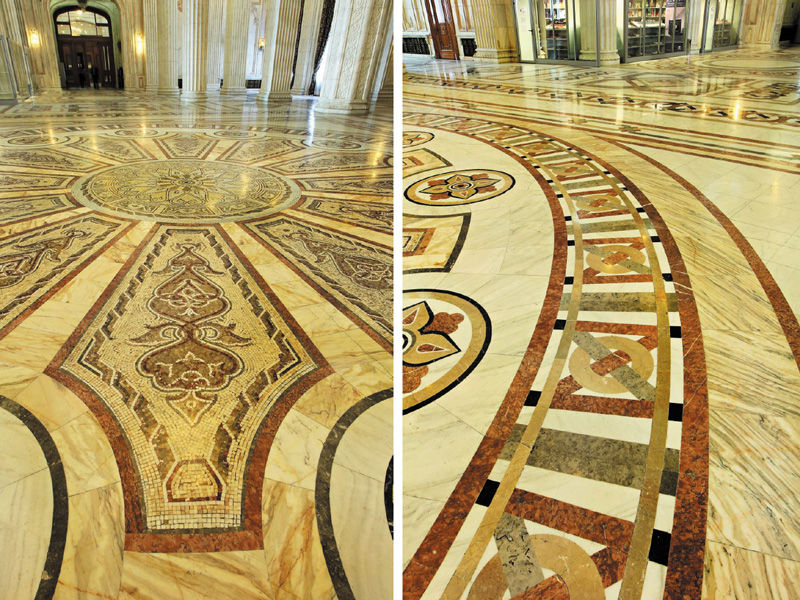
The Parliament Palace in Bucharest (Romania) is no ordinary building. For one, it is considered to be the second biggest building in the world after the Pentagon in USA. There is some history behind it. Originally the project began as a Palace for the Romanian ex-dictator Nicolaus Ceaucescu, it started in the seventies, and the original name he gave was Casa Poporului (House of the People).

Rumour has it that after a visit to North Korea in the seventies where Ceaucescu saw a similar huge building in honour of Kim II Sung, the dictator ordered one that was similar to it. About 2 million square metres of marble has already been installed in the building so far, but another 20% of it is still uncompleted. Lack of funds means that work on the building takes place only intermittently, and is now expected to be finally completed in 10 years time. The project may well be the largest amount of marble used in one building. 99 % of the marble used is Ruschita Marble, which is quarried in Romania.

Even today there is limited access to the Palace for the public. According to street rumours there are lots of underground tunnels and anti-atomic bomb bunkers below.

Note about Ruschita Marble:
The marble was first exploited in 1883 during the time of the Austro-Hungarian Empire. In 1946 the quarry was nationalized by the Communist regime ruling the country. In 1970 the Palace Project began. The biggest market for the material currently is Middle East and Japan, only a few years ago the biggest market was Saudi Arabia.
